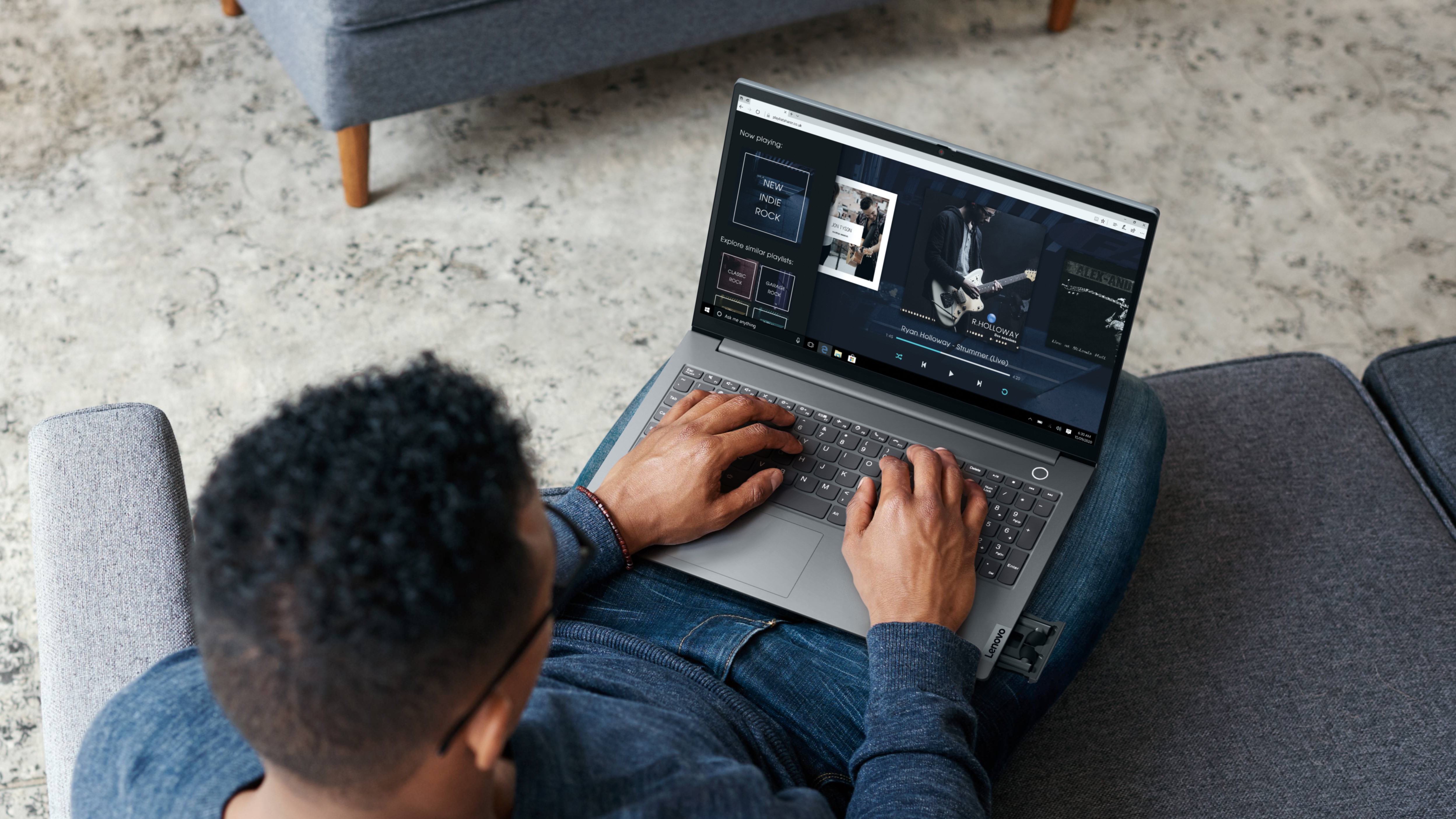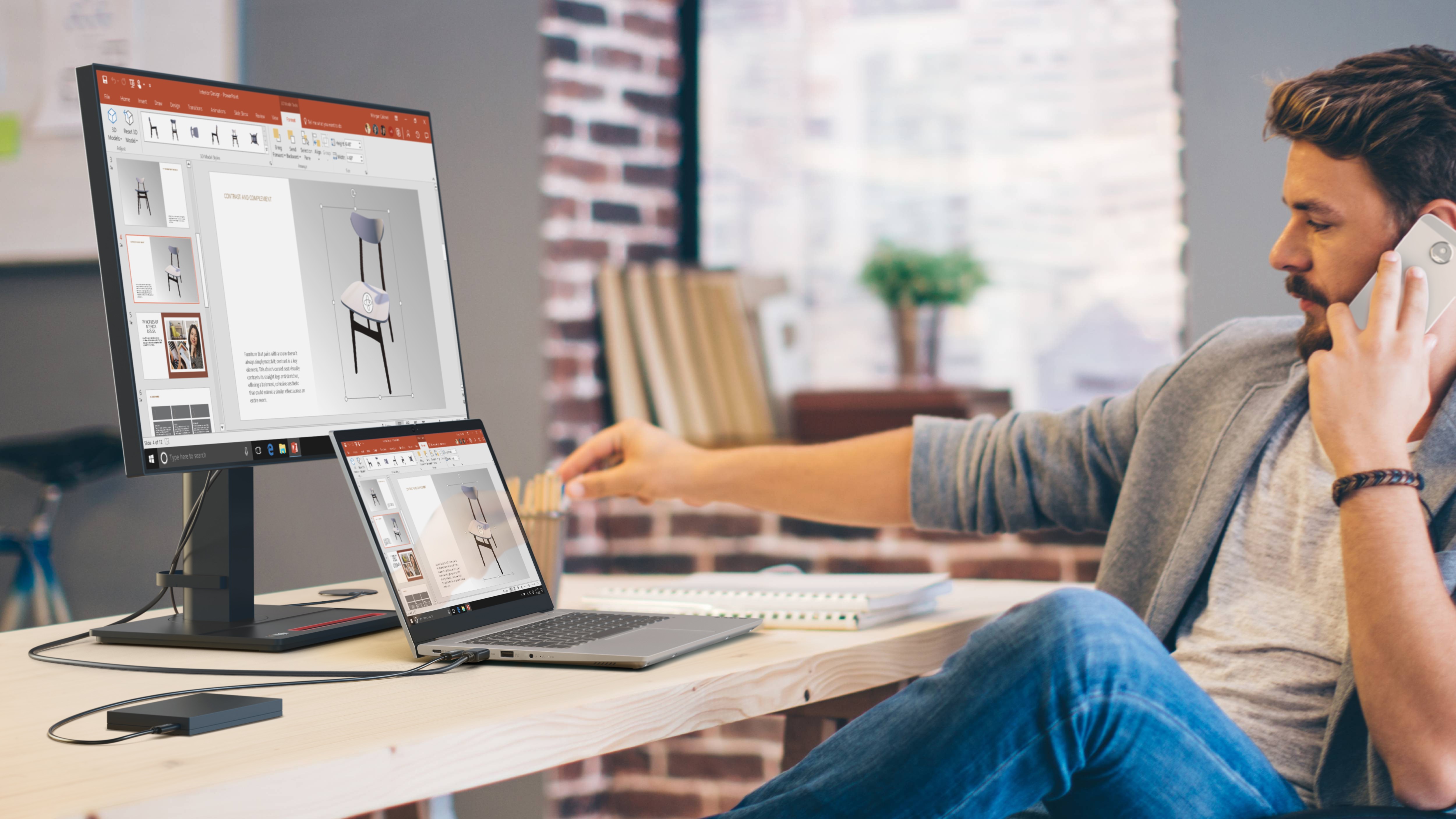How the pandemic has accelerated the future of work
Hybrid working could soon become the new normal

2020 was a year like no other with organizations around the world having to transition to remote working at an unprecedented pace. While working from home has become more common in recent years, up until now it was considered a perk that businesses could offer potential employees to sweeten the deal. Last year though saw employees scrambling to set up home offices as they learned to use video conferencing software, VPN services, remote desktop software and other tools needed to communicate with their teams while trying to stay secure online.
Organizations themselves also had to come to terms with all of these changes and learn how to manage their now remote workforces. To learn more about some of the lessons learned during the pandemic by Lenovo, TechRadar Pro spoke with the company’s VP and CMO of its Intelligent Devices Group, Emily Ketchen.
- We've built a list of the best business laptops available
- These are the best business webcams for working from home
- Also check out our roundup of the best business accessories
Can you tell us a bit about what it was like taking on a new role at Lenovo during the pandemic?
I am currently Vice President and CMO of our Intelligent Devices Group in which I define marketing strategies and campaigns to grow the brand and story around how we empower our partners and customers through technology. Lenovo has an enviable breadth of technology in the portfolio, but we don’t “sell” hardware, we listen, understand and act as an advisor to businesses and together we create solutions that are best for their business and will help them thrive and grow. The pandemic has presented unimaginable challenges for many of our customers and now it’s more critical than ever to develop helpful solutions based on customer insights that deliver tangible benefits.
The pandemic has accelerated hybrid working models, but the transformation to cloud-based collaboration software was already underway. Again, listening to our customers, we created a dedicated personal communications device called ThinkSmart View. Purpose-built for Microsoft Teams meetings, the 8-inch Teams display optimizes workflow by separating meeting and calendar activity from the primary workstation enabling more efficient multi-tasking. Additionally, we understand the financial and logistical strains that SMBs are under, especially during difficult economic shifts.
Ensuring that employees have the right technology to do their job is one thing, but funding, deploying and managing those assets can be a major headache. That’s why I’m a big believer of the ‘Everything-as-a-Service’ trend. By using a subscription model SMBs can take the hassle and capital expense out of the equation, meaning for a monthly fee, users can have the tech and IT support they need. Deployment can be to their remote location and support can be provided taking the burden off of IT departments, allowing them to focus on the next wave of technology investments that will drive growth and competitive advantage.

What lessons have you learned over the past year and what were the most challenging aspects of working remotely?
The past year we have seen firsthand how rapid digital transformation can be. Anything that was able to transfer to a fully online service did. Schools, work and businesses quickly adapted to providing services 100 percent online.
The past year has taught us many things and one undeniable lesson to take away is that technology will continue to evolve at a rapid pace to allow for flexibility at scale. This rapid shift posed a challenge for many companies including Lenovo. We had to quickly shift to remote teams all across the world and still find ways to collaborate and keep our employees safe and productive.
To adjust for the increased IT purchasing in 2021, businesses will shift their investments to account for transportability over mobility; with many employees no longer truly mobile, we may see a shift to more compact desktops that are easy to ship and transport. Businesses will adopt Internet of Things (IoT) solutions that help monitor safety and wellbeing in the workplace, including touchless entryways integrated into badges or smartphones, temperature sensors and AI-assisted adaptations to people’s movements in the workplace. “As-a-service” and “subscription-based” models will become more mainstream as businesses look for increased access to a wider array of tools at an affordable price.
We’ve learned that top focus areas need to be in robotics with a focus on telepresence, automation, cloud, and security. The pandemic shed a light on the increased cyber-risks presented by a distributed workforce and how several enterprises will need to continue providing employees with safe and secure technology as well as security education training.
How have marketing campaigns and strategies adapted in the past year?
Our strategy is primarily about building relationships, not being focused on the transaction. Being a valued partner in that relationship will help customers seize growth opportunities and in turn, invest in new prospects. However, any business that properly understands customer insights and listens to what their customers are saying will already have a competitive edge. At Lenovo, we offer guidance on integrating emerging technologies and where they can be most beneficial. In a more hybrid working environment, being able to offer immersive training solutions will not only keep staff current with the latest innovations but makes a company more attractive to prospective talent.
The past 12 months have clearly shown that technology plays a significant part in people engagement and general well-being. Happy employees will make happy customers, so as long as business owners understand people are their most valuable assets and at the center of growth and opportunity, they can then make sure those people have the right tools to do their jobs most effectively and success will follow.

How has Lenovo altered its PCs and laptops to better suit the needs of a remote workforce?
Whether you’re an up-and-coming small business or a large enterprise, our services portfolio offers solutions that keep your operations leaner, costs lower, and employees more productive. Employees are a company’s biggest asset and SMBs will want to keep them enabled with the right technology tools to help them stay on track.
Lenovo Device as a Service (DaaS) helps customers manage their entire device lifecycle so their employees can stay focused on what matters most. To provide the most benefit for SMBs in the current landscape, SaaS and DaaS solutions can allow them to outsource hardware, software and support management tasks to DaaS providers. It can also offer the capability to invest in new, emerging tech (IoT, AR/VR) that could make their business more agile, efficient and open to more opportunities. SMBs should feel secure switching to this customizable subscription-based model because it aligns with their needs, provides IT budget optimization, and strives to maximize company and employee efficiency.
As we move forward, customers can also expect new form factors such as dual-screen configurations, on-screen keyboard inputs and voice-to-text tools that are less reliant on a physical keyboard. For example, the ThinkBook Plus features an innovative e-Ink cover display that helps users be more productive when multitasking by improving focus, collaboration and creativity.
Was it difficult to adapt in-person conferences to virtual events and does Lenovo plan to continue holding them in the future?
As a global technology brand, operating in 180 markets around the world for 35 years, Lenovo is well equipped and prepared for digital and virtual transformation. We are uniquely positioned to adapt our event strategy to serve a remote audience and will continue to follow health and safety guidelines in terms of all business matters.
Looking ahead, we still see growth opportunities as the world continues to move to working and learning from home. We see these opportunities not only in terms of devices, but data center and infrastructure technology. Lenovo innovates with purpose to solve the real human problems and challenges of today and in the future so we will lead with that as we plan for any future events.

Do you believe that our shared experiences during the pandemic will have a significant effect on the future of work?
In this last year, employees worldwide have embraced working from anywhere as the “office” became wherever their technology is. Work is no longer confined to one specific location, with many employees choosing never to return to a traditional office environment, even post-COVID. Workers are in a groove and overall, feel it’s a net positive compared to their previous situation in the traditional office setting. Most employees will likely never return to the office 5x a week again.
According to Lenovo’s latest research, almost all (90 percent) of respondents want the option of an office or meeting space to connect with colleagues when needed, with 60 percent of employees preferring to WFH at least half of the time. The future of the office will be a hybrid “business center” model, equipped with collaboration technologies that allow employees to seamlessly transition from WFH to WFA. Lenovo’s latest research shows 56% of employees worldwide feel more productive when WFH, in comparison to findings from earlier in the pandemic when 63 percent of employees expressed higher levels of productivity while working from home.
In the initial stages of the pandemic, companies were enthusiastically turning to video calls for business meetings, virtual happy hours and other gatherings. And while this is still a necessary form of communication, employees are experiencing digital fatigue. Longer working hours and missing personal connections with colleagues is having a profound impact. Furthermore, finding the right work/life equilibrium is a true balancing act.
Research from Great Place to Work showed employee productivity decreased in Summer 2020, indicating that employee burnout and loss of work/life balance were key factors. Business leaders need to turn inwards, analyze their organization to identify remote teams that are thriving, work with them to understand their strategies, and scale their models. Similarly, they must focus on communicating with employees to understand what they need to reach peak performance. They must also encourage flexible work schedules as employees continue to navigate the challenges of working from home, including breaks throughout the day. Business leaders should also equip their employees with the right technology tools for their preferred work style. While some employees might have a dedicated office space where they are most efficient with multiple screens, some prefer portable technology for a nomadic work lifestyle. Small enterprises will need to future-proof their business with the right security solutions and protect against higher cybersecurity risks such as, unauthorized access and data leakage, using personal devices for business and increased phishing.
- We've also rounded up all the gear you'll need to work from home successfully
Are you a pro? Subscribe to our newsletter
Sign up to the TechRadar Pro newsletter to get all the top news, opinion, features and guidance your business needs to succeed!